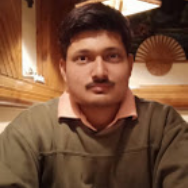International Journal of Intelligent Systems and Applications (IJISA)
IJISA Vol. 17, No. 5, 8 Oct. 2025
Cover page and Table of Contents: PDF (size: 864KB)
Optimizing Kidney Stone Detection: Exploring YOLOv8 Variants for Computational Efficiency and Enhanced Accuracy
PDF (864KB), PP.1-12
Views: 0 Downloads: 0
Author(s)
Index Terms
Kidney Stone Detection, Computer Aided Diagnosis (CAD), YOLOv8, Computational Efficiency, Deep Learning
Abstract
Kidney stones are solid mineral and salt deposits formed within the kidneys, causing excruciating discomfort and pain when they obstruct the urinary tract. The presence of speckle noise in CT-scan images, coupled with the limitations of manual interpretation, makes kidney stone detection challenging and highlighting the need for precise and efficient diagnosis. This research investigates the efficacy of YOLOv8 models for kidney stone detection, aiming to strike a balance between computational efficiency and detection accuracy. This study's novel evaluation framework and practical deployment considerations underscore its contributions to advance kidney stone detection technologies. It evaluates five YOLOv8 variants (nano, small, medium, large, and extra-large) using standard metrics such as precision, recall, F1-score, and mAP@50, alongside computational resources like training time, power consumption, and memory usage. The comprehensive evaluation reveals that while YOLOv8s and YOLOv8e demonstrate superior performance in traditional metrics, YOLOv8s emerges as the optimal model, offering a harmonious balance with its high precision (0.917), highest mAP@50 (0.918), moderate power consumption (150W), and efficient memory usage. Graphical analyses further elucidate the behaviour of each model across different confidence thresholds, confirming the robustness of YOLOv8s. Additionally, this research explores the impact of model size and complexity on inference speed, demonstrating that smaller YOLOv8 variants achieve real-time performance with minimal latency. The study also introduces a method for model scalability, allowing for adjustments in accuracy and computational demand based on specific clinical or resource constraints. These contributions further emphasize the importance of holistic model assessment for real-world medical applications.
Cite This Paper
Amol Satsangi, Shaurya Jain, Subho Upadhyay, "Optimizing Kidney Stone Detection: Exploring YOLOv8 Variants for Computational Efficiency and Enhanced Accuracy", International Journal of Intelligent Systems and Applications(IJISA), Vol.17, No.5, pp.1-12, 2025. DOI:10.5815/ijisa.2025.05.01
Reference
[1]T. Alelign and B. Petros, “Kidney Stone Disease: An update on current concepts,” Advances in Urology, vol. 2018, pp. 1–12, 2018.
[2]S. R. Khan, M. S. Pearle, W. G. Robertson, G. Gambaro, B. K. Canales, S. Doizi, O. Traxer, and H.-G. Tiselius, “Kidney stones,” Nature Reviews Disease Primers, vol. 2, no. 1, Feb. 2016.
[3]Z. Wang, Y. Zhang, J. Zhang, Q. Deng, and H. Liang, “Recent advances on the mechanisms of Kidney Stone Formation (review),” International Journal of Molecular Medicine, vol. 48, no. 2, Jun. 2021.
[4]B. Aldughayfiq, F. Ashfaq, N. Z. Jhanjhi, and M. Humayun, “YOLO-Based Deep Learning Model for pressure Ulcer detection and Classification,” Healthcare, vol. 11, no. 9, p. 1222, Apr. 2023, doi: 10.3390/healthcare11091222.
[5]M. Mousavi, F. S. Mirshafiee, E. Shahbazi, M. Safi, and A. Mosavi, YOLO for Lung Disease Detection from CT Scans. 2023. doi: 10.1109/sisy60376.2023.10417904.
[6]F. Prinzi, M. Insalaco, A. Orlando, S. Gaglio, and S. Vitabile, “A Yolo-Based model for breast cancer detection in mammograms,” Cognitive Computation, vol. 16, no. 1, pp. 107–120, Aug. 2023, doi: 10.1007/s12559-023-10189-6.
[7]N. Aishwarya, K. M. Prabhakaran, F. T. Debebe, M. S. S. A. Reddy, and P. Pranavee, “Skin Cancer diagnosis with Yolo Deep Neural Network,” Procedia Computer Science, vol. 220, pp. 651–658, Jan. 2023, doi: 10.1016/j.procs.2023.03.083.
[8]F. Isensee, P. F. Jaeger, S. A. Kohl, J. Petersen, and K. H. Maier-Hein, “NNU-net: A self-configuring method for deep learning-based biomedical image segmentation,” Nature Methods, vol. 18, no. 2, pp. 203–211, Dec. 2020.
[9]Z. Jiang, H. Zhang, Y. Wang, and S.-B. Ko, “Retinal blood vessel segmentation using fully convolutional network with transfer learning,” Computerized Medical Imaging and Graphics, vol. 68, pp. 1–15, Sep. 2018, doi: https://doi.org/10.1016/j.compmedimag.2018.04.005.
[10]X. Wu, D. Sahoo, and S. C. H. Hoi, “Recent advances in Deep Learning for Object Detection,” Neurocomputing, vol. 396, pp. 39–64, Jul. 2020.
[11]A. Haghanifar, M. M. Majdabadi, Y. Choi, S. Deivalakshmi, and S. Ko, “COVID-CXNet: Detecting COVID-19 in frontal chest X-ray images using deep learning,” Multimedia Tools and Applications, Apr. 2022, doi: https://doi.org/10.1007/s11042-022-12156-z.
[12]J. Zhang, Y. Xie, Q. Wu, and Y. Xia, “Medical Image Classification using synergic Deep learning,” Medical Image Analysis, vol. 54, pp. 10–19, May 2019.
[13]Y. Wang, E. J. Choi, Y. Choi, H. Zhang, G. Y. Jin, and S.-B. Ko, “Breast Cancer Classification in Automated Breast Ultrasound Using Multiview Convolutional Neural Network with Transfer Learning,” Ultrasound in Medicine & Biology, vol. 46, no. 5, pp. 1119–1132, May 2020, doi: https://doi.org/10.1016/j.ultrasmedbio.2020.01.001.
[14]A. Satsangi, K. Srinivas, and A. Charan Kumari, “Investigating transfer learning models for lung cancer detection from CT scans: A comparative evaluation,” Artificial Intelligence and Sustainable Computing, pp. 231–242, 2024.
[15]S. Jain, K. Srinivas, and A. C. Kumari, “Inspecting transfer learning models for diabetic retinopathy detection,” 2023 3rd International Conference on Emerging Frontiers in Electrical and Electronic Technologies (ICEFEET), Dec. 2023.
[16]N. A. Almansour, H. F. Syed, N. R. Khayat, R. K. Altheeb, R. E. Juri, J. Alhiyafi, S. Alrashed, and S. O. Olatunji, “Neural network and support vector machine for the prediction of chronic kidney disease: A comparative study,” Computers in Biology and Medicine, vol. 109, pp. 101–111, Jun. 2019.
[17]S. Yin, Q. Peng, H. Li, Z. Zhang, X. You, K. Fischer, S. L. Furth, G. E. Tasian, and Y. Fan, “Automatic Kidney Segmentation in ultrasound images using subsequent boundary distance regression and Pixelwise Classification Networks,” Medical Image Analysis, vol. 60, p. 101602, Feb. 2020.
[18]V. B. Kolachalama, P. Singh, C. Q. Lin, D. Mun, M. E. Belghasem, J. M. Henderson, J. M. Francis, D. J. Salant, and V. C. Chitalia, “Association of pathological fibrosis with renal survival using Deep Neural Networks,” Kidney International Reports, vol. 3, no. 2, pp. 464–475, Mar. 2018.
[19]M. Baygin, O. Yaman, P. D. Barua, S. Dogan, T. Tuncer, and U. R. Acharya, “Exemplar DARKNET19 feature generation technique for automated kidney stone detection with coronal CT images,” Artificial Intelligence in Medicine, vol. 127, p. 102274, May 2022.
[20]A. F. Bayram, C. Gurkan, A. Budak, and H. Karatas, “A Detection and Prediction Model Based on Deep Learning Assisted by Explainable Artificial Intelligence for Kidney Diseases,” European Journal of Science and Technology, Sep. 2022.
[21]S. Rabby, F. Hossain, S. Das, I. Rahman, S. Das, J. Soeb, and Md. F. Jubaye, “An automated approach for the kidney segmentation and detection of kidney stones on computed tomography using YOLO algorithms,” Journal of Ideas in Health, vol. 6, no. 4, pp. 963–970, Nov. 2023.
[22]M. Tai, Viet Tuan Le, Huu Thanh Duong, and Vinh Truong Hoang, “Detection of Kidney Stone Based on Super Resolution Techniques and YOLOv7 Under Limited Training Samples,” Lecture notes on data engineering and communications technologies, pp. 23–33, Jan. 2023, doi: https://doi.org/10.1007/978-3-031-46749-3_3.
[23]Reuben, B.., & Narmadha, C.. Effective Kidney Stone Prediction Based on Optimized Yolov7 Segmentation and Deep Learning Classification. International Journal of Intelligent Systems and Applications in Engineering, 12(1), 183–192 (2023).
[24]Adnin Ramadhani, & Abu Salam. (2024). Deployment of Web-Based YOLO for CT Scan Kidney Stone Detection. Sinkron : Jurnal Dan Penelitian Teknik Informatika, 8(3), 1357-1368. https://doi.org/10.33395/sinkron.v8i3.13744
[25]J. Redmon, S. Divvala, R. Girshick, and A. Farhadi, “You only look once: Unified, real-time object detection,” 2016 IEEE Conference on Computer Vision and Pattern Recognition (CVPR), Jun. 2016.
[26]R. Girshick, “Fast R-CNN,” 2015 IEEE International Conference on Computer Vision (ICCV), Dec. 2015.
[27]J. Redmon and A. Farhadi, “Yolo9000: Better, faster, stronger,” 2017 IEEE Conference on Computer Vision and Pattern Recognition (CVPR), Jul. 2017.
[28]J. Redmon and A. Farhadi, “YOLOv3: An Incremental Improvement,” arXiv (Cornell University), Jan. 2018, doi: 10.48550/arxiv.1804.02767. Available: https://arxiv.org/abs/1804.02767
[29]A. Bochkovskiy, C.-Y. Wang, and H.-Y. M. Liao, “YOLOv4: Optimal Speed and Accuracy of Object Detection,” arXiv (Cornell University), Jan. 2020, doi: 10.48550/arxiv.2004.10934. Available: https://arxiv.org/abs/2004.10934
[30]G. Jocher, “YOLOv5 by Ultralytics.” https://github.com/ultralytics/yolov5, 2020.Accessed: March 1, 2024.
[31]C. Li et al., “YOLOv6: A Single-Stage Object Detection Framework for Industrial Applications,” arXiv (Cornell University), Jan. 2022, doi: 10.48550/arxiv.2209.02976. Available: https://arxiv.org/abs/2209.02976.
[32]C.-Y. Wang, A. Bochkovskiy, and H.-Y. M. Liao, “Yolov7: Trainable bag-of-freebies sets new state-of-the-art for real-time object detectors,” 2023 IEEE/CVF Conference on Computer Vision and Pattern Recognition (CVPR), Jun. 2023.
[33]G. Jocher, A. Chaurasia, and J. Qiu, “YOLO by Ultralytics.” https://github.com/ultralytics/ultralytics, 2023.Accessed: March 1, 2024.
[34]C.-Y. Wang, I.-H. Yeh, and H.-Y. M. Liao, “YOLOv9: Learning What You Want to Learn Using Programmable Gradient Information,” arXiv (Cornell University), Feb. 2024, doi: 10.48550/arxiv.2402.13616. Available: https://arxiv.org/abs/2402.13616
[35]A. Wang et al., “YOLOv10: Real-Time End-to-End Object Detection,” arXiv (Cornell University), May 2024, doi: 10.48550/arxiv.2405.14458. Available: https://arxiv.org/abs/2405.14458.
[36]"Kidney Stone Detection Image Dataset" https://universe.roboflow.com/selam-h8tid/kidney-stone-detection-fwubk/dataset/1. Accessed: January 12, 2024.
[37]"ultralytics" https://www.ultralytics.com/. Accessed: January 12, 2024.
[38]M. Gulhane et al., “Integrative approach for efficient detection of kidney stones based on improved deep neural network architecture,” SLAS TECHNOLOGY, vol. 29, no. 4, p. 100159, Jun. 2024, doi: 10.1016/j.slast.2024.100159.
[39]A. Tsitsiflis et al., “The use of an artificial neural network in the evaluation of the extracorporeal shockwave lithotripsy as a treatment of choice for urinary lithiasis,” Asian Journal of Urology, vol. 9, no. 2, pp. 132–138, Sep. 2021, doi: 10.1016/j.ajur.2021.09.005.
[40]D. C. Elton, E. B. Turkbey, P. J. Pickhardt, and R. M. Summers, “A deep learning system for automated kidney stone detection and volumetric segmentation on noncontrast CT scans,” Medical Physics, vol. 49, no. 4, pp. 2545–2554, Feb. 2022, doi: 10.1002/mp.15518.
[41]S. Rabby et al., “An automated approach for the kidney segmentation and detection of kidney stones on computed tomography using YOLO algorithms,” Journal of Ideas in Health, vol. 6, no. 4, pp. 963–970, Nov. 2023, doi: 10.47108/jidhealth.vol6.iss4.313.
[42]A. F. Bayram, C. Gurkan, A. Budak, and H. Karataş, “A Detection and Prediction Model Based on Deep Learning Assisted by Explainable Artificial Intelligence for Kidney Diseases,” European Journal of Science and Technology, Sep. 2022, doi: 10.31590/ejosat.1171777.


